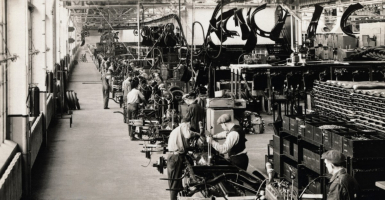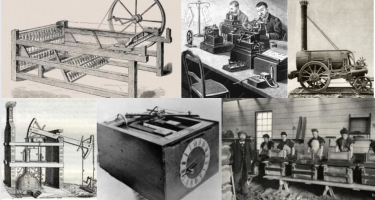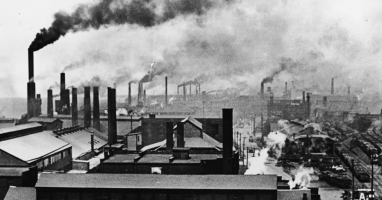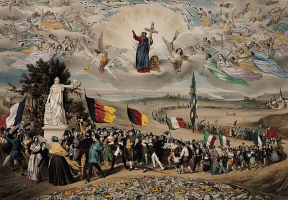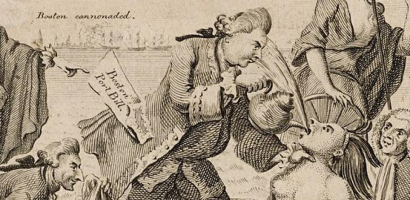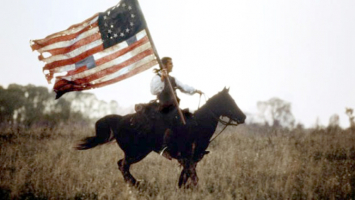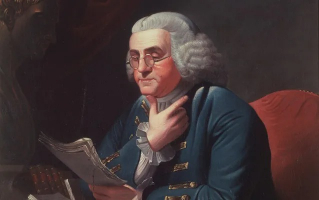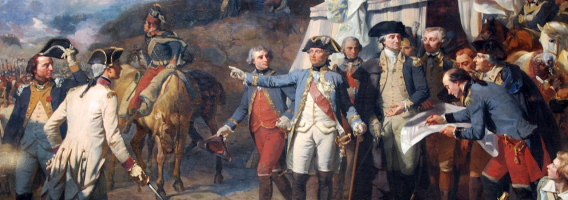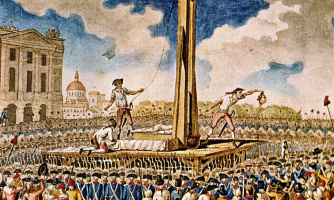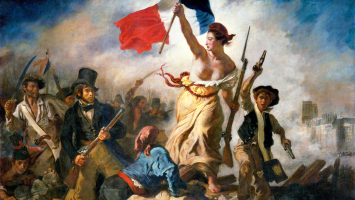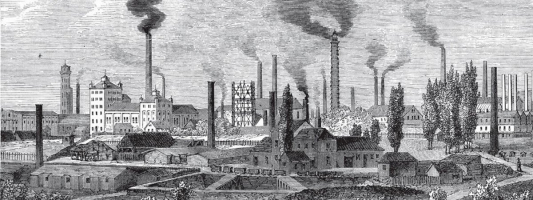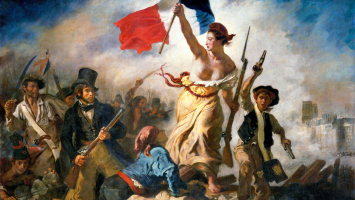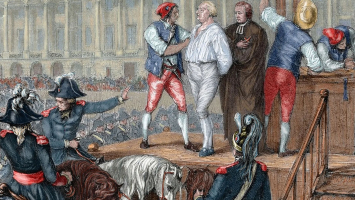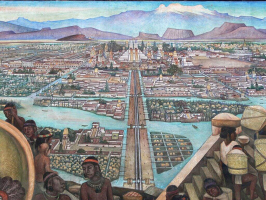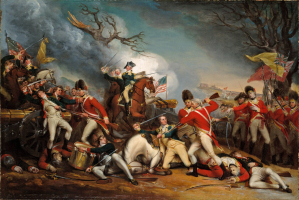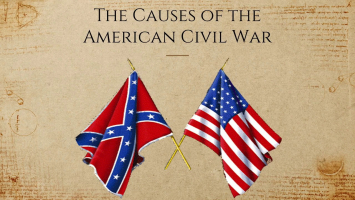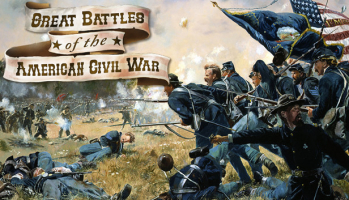Top 10 Major Inventors of the Industrial Revolution
The Industrial Revolution was the transition to new manufacturing methods in the United Kingdom, continental Europe, and the United States from around 1760 ... read more...until between 1820 and 1840. The Industrial Revolution was a watershed moment in history. In terms of material improvement, the Industrial Revolution was only second to humanity's adoption of agriculture. It touched practically every area of daily life in some manner. Here are the 10 major inventors of the Industrial Revolution.
-
During the early Industrial Revolution, Englishman Sir Richard Arkwright was a pioneering inventor and businessman. As one of the major inventors of the Industrial Revolution, he is credited with being the impetus behind the creation of the spinning frame, which later became known as the "water frame" after being modified to run on water. He also designed a rotating carding machine to turn raw cotton into a "cotton lap" before spinning. He was the pioneer in creating plants with automated carding and spinning processes.
In order to generate mass-produced yarn, Arkwright combined power, machinery, semi-skilled labor, and the new raw cotton material. Because of the procedures he created in his mill in Cromford, Derbyshire, his organizing talents won him the "father of the modern industrial factory system".
When Richard Arkwright and John Kay, a clockmaker, returned to Preston in 1768, they rented rooms in a home on Stoneygate and built a spinning machine. The spinning frame, invented by Arkwright in 1769, used wooden and metal cylinders instead of human fingers to create twisted threads. The cost of cotton spinning was significantly decreased by this device, which horses first propelled, and it would bring about significant changes in the textile industry.
The carding machine was created in 1748 by Lewis Paul. After making modifications to this device, Richard Arkwright obtained a patent in 1775 for a novel carding engine that transformed unprocessed cotton into a continuous skein before spinning. After drawing out the roving with a series of uneven rollers rolling at progressively greater speeds, the machine applied a twist using a bobbin-and-flyer system. It might be able to make cotton strong enough and thin enough for the fabric's warp threads.
A small horse-driven factory was established in Nottingham by Arkwright and John Smalley of Preston. Arkwright partnered with wealthy nonconformist hosiery manufacturers Jedediah Strutt and Samuel Need to raise money for growth. The partners constructed Cromford, which included carding and spinning activities and employed 200 workers, as the first water-powered mill in the world in 1771. Following the construction of a second, larger mill at Cromford in 1776, Arkwright also constructed mills in Bakewell, Wirksworth, and other locations. In his own day, he was well-known for his achievements as an inventor and businessman. The spinning frame was a considerable improvement over Hargreaves' spinning jenny since it produced strong yarn suited for warp threads with very little training.
Born: 23 December 1732 (Preston, Lancashire, England)
Died: 3 August 1792 (Cromford, Derbyshire, England)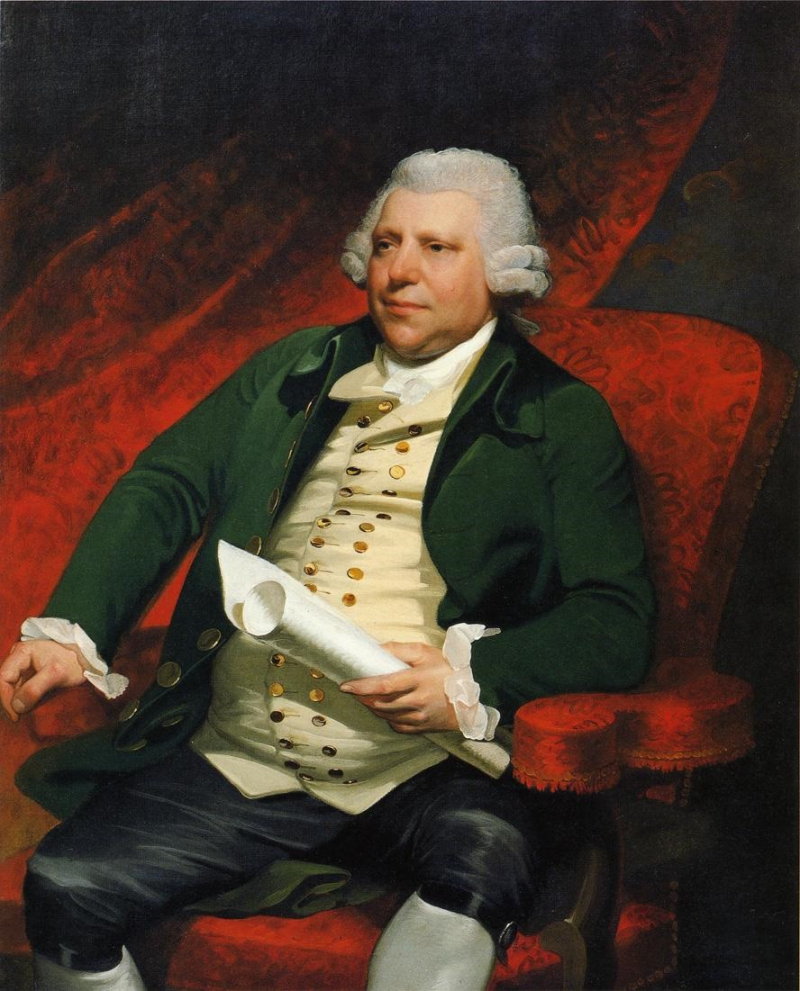
en.wikipedia.org 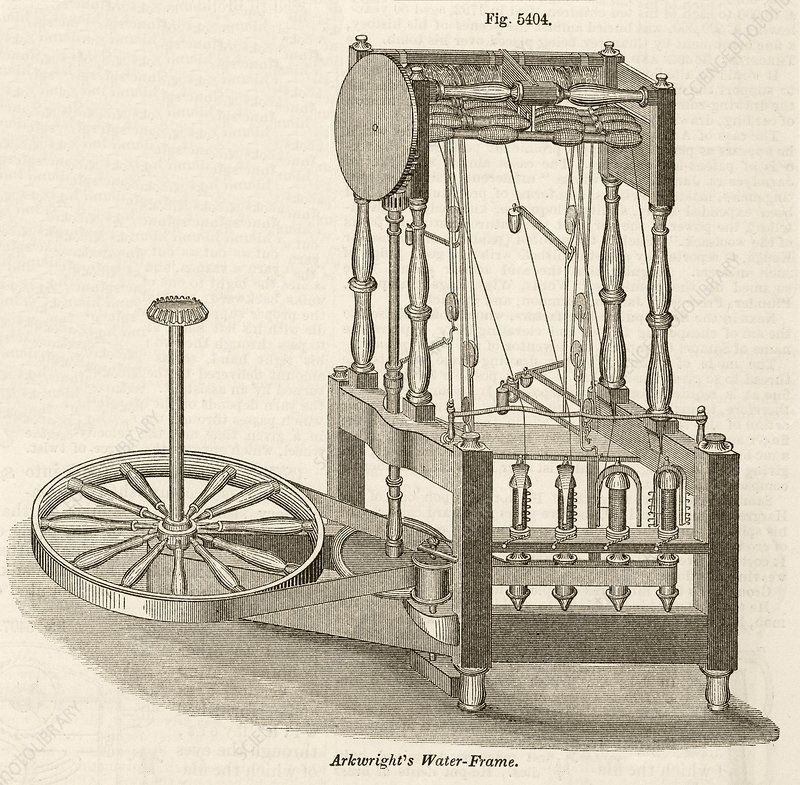
wikiwand.com -
The Watt steam engine, created in 1776 by Scottish inventor, mechanical engineer, and chemist James Watt, was a key component of the Industrial Revolution that transformed both his native Great Britain and the rest of the world. Watt improved on Thomas Newcomen's 1712 Newcomen steam engine.
Watt developed an interest in steam engine technology while working as an instrument maker at the University of Glasgow. James Watt understood that by constantly cooling and reheating the cylinder, modern engine designs lost a significant amount of energy. The separate condenser, a design improvement made by Watt, prevented this energy wastage and significantly increased the power, efficacy, and affordability of steam engines. He eventually modified his engine to generate rotary motion, substantially expanding its application beyond water pumping.
Before forming a company with Matthew Boulton in 1775, Watt tried to sell his innovation but struggled mightily financially. Watt finally got wealthy and the new firm of Boulton and Watt became very successful. Watt continued to create other innovations after retiring, although none were as significant as his work on the steam engine.
The first engines were installed and operational in businesses in 1776. The only motion created by these early engines, which were employed to power pumps, was a reciprocating motion to move the pump rods at the shaft's base. Since the design was profitable, Watt spent the following five years installing additional engines, largely in Cornwall, to pump water out of mines. He continued to modify and enhance the steam engine throughout the course of the following six years. One of these was a double-acting engine, in which the steam alternately worked on the two sides of the piston. It was described how a compound engine coupled with two or more engines. These received two additional patents in 1781 and 1782.
Other enhancements that facilitated simpler manufacturing and installation were continuously put into practice. The parallel motion linkage was yet another significant development and one of which Watt was very proud. In 1784, this was patentable. It was crucial to have a centrifugal governor, which was developed in 1788, to prevent the engine from "running away," as well as a throttle valve to manage the engine's output. Together, these upgrades led to an engine that was up to five times more fuel-efficient than the Newcomen engine. Watt introduced the idea of horsepower, and as a result, the watt, a SI unit of power, was called in his honor.
Born: 19 January 1736 (Greenock, Renfrewshire, Scotland)
Died: 25 August 1819 (Handsworth, Birmingham, England)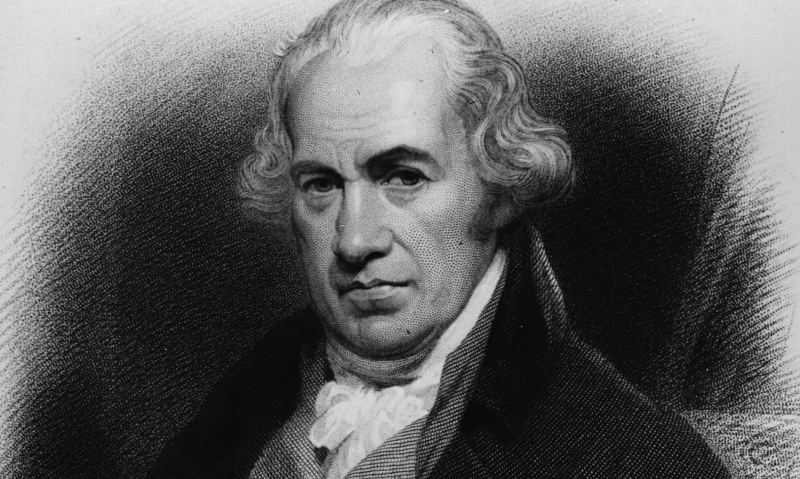
sites.google.com 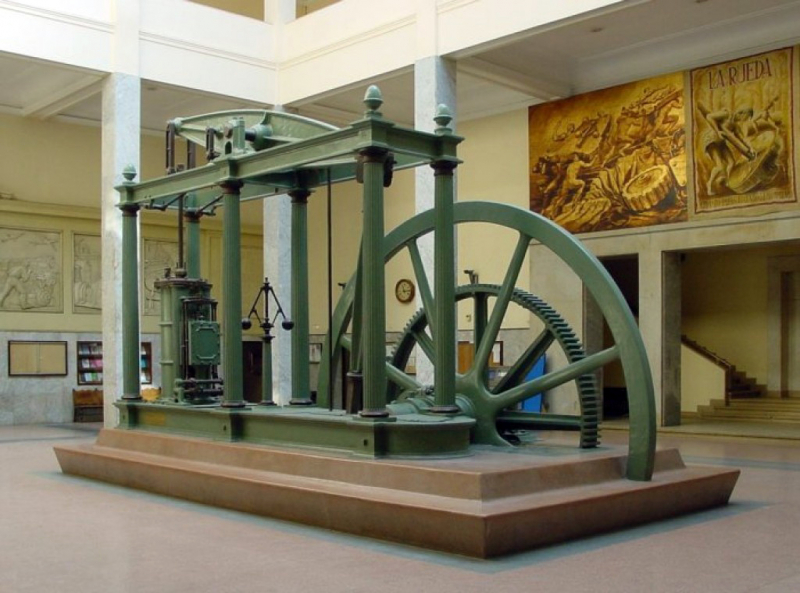
en.wikipedia.org -
As one of the major inventors of the Industrial Revolution, George Stephenson was a mechanical and civil engineer from England. Stephenson, known as the "Father of Railways," was admired by Victorians for his perseverance and desire for advancement. Samuel Smiles, a proponent of self-help, highlighted his accomplishments. The 1.435 m standard gauge used by the majority of the world's railways is based on the rail size he picked, sometimes referred to as "Stephenson gauge".
One of the most significant technological advancements of the 19th century and a crucial element of the Industrial Revolution was rail transportation, which was invented by Stephenson. Locomotion No. 1 was the first steam locomotive to haul passengers on a public rail line, the Stockton and Darlington Railway, in 1825. It was built by George and his son Robert's business, Robert Stephenson and Company. The Liverpool and Manchester Railway, the first public intercity railroad in history to employ locomotives, was also constructed by George and inaugurated in 1830.
In 1814, George Stephenson created his first locomotive, dubbed Blücher after the Prussian general Gebhard Leberecht von Blücher, which was intended to move coal on the Killingworth wagonway. The locomotive was the first successful flanged-wheel adhesion locomotive; its propulsion depended on contact between its flanged wheels and the rail. It could move 30 tons of coal up a slope at a speed of 4 mph (6.4 km/h).
Iron edge rails were in their infancy, with cast iron exhibiting severe brittleness, and the new engines were too powerful to run on timber rails or plate-ways. In order to decrease breakage, Stephenson and William Losh refined the design of cast-iron edge rails; for a brief period, Losh, Wilson, and Bell produced the rails at their Walker ironworks. Rolt claims that Stephenson was able to find a solution to the issue brought on by the engine's weight on the rudimentary rails. He tried utilizing a steam spring, but soon adopted the method of "distributing" weight by employing a series of wheels or bogies. Despite the financial cost he experienced from not employing his own patented design, Stephenson chose to use wrought-iron flexible rails for the Stockton and Darlington Railway.
Born: 9 June 1781 (Wylam, Northumberland, England)
Died: 12 August 1848 (Tapton House, Chesterfield, Derbyshire, England)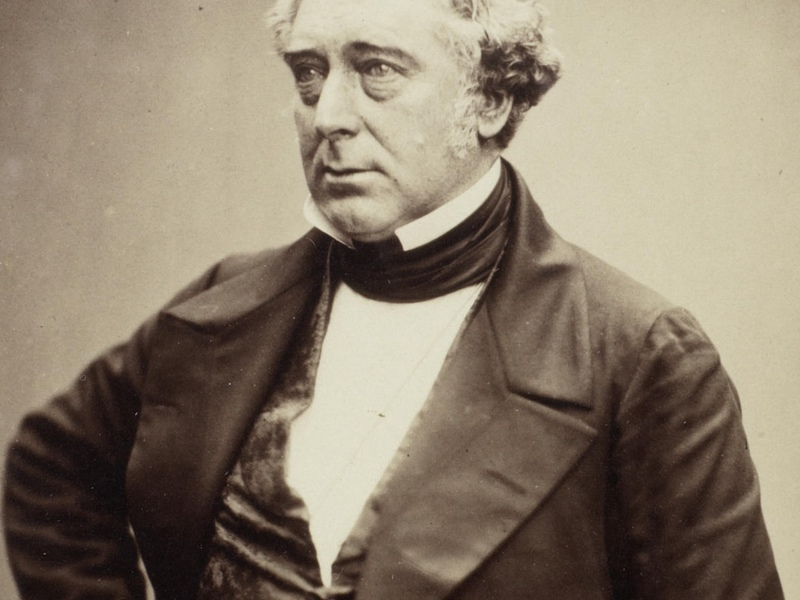
cobaltrecruitment.co.uk 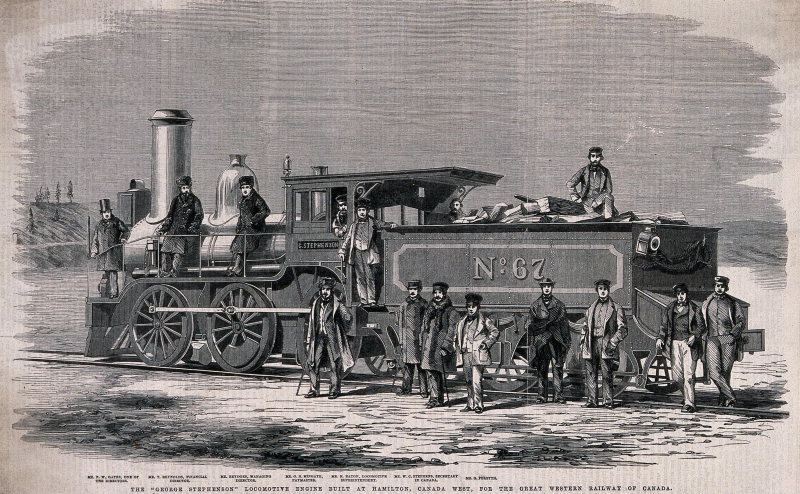
wellcomecollection.org -
Eli Whitney Jr. was an American inventor best known for creating the cotton gin, one of the fundamental technologies of the Industrial Revolution that changed the Antebellum South's economy.
Whitney's invention turned upland short cotton into a lucrative crop, which strengthened the economic basis of slavery in the United States and prolonged the institution. Whitney himself had believed that his invention would lessen the need for enslaved labor and help hasten the end of southern slavery. Eli Whitney Jr. wasted a lot of money in court fights over cotton gin patent infringement despite the positive social and economic effects of his technology. After that, he focused on obtaining government contracts for the production of muskets for the recently founded United States Army. He continued to manufacture weaponry and develop it until his death in 1825.
The cotton gin is a mechanical device that extracts the seeds from cotton, a traditionally labor-intensive procedure. Gin is an abbreviation for the engine. Whitney built several ingenious household devices while staying at Mulberry Grove, prompting Mrs. Greene to introduce him to some businessmen who were discussing the feasibility of a machine to separate the short-staple upland cotton from its seeds, work that was previously done by hand at the rate of a pound of lint per day. Whitney created a model in a few weeks. The cotton gin was a wooden drum with hooks that drew cotton fibers through a mesh. Cotton seeds were unable to pass through the mesh and dropped outside. Whitney periodically related a tale about how he was thinking about a better way to seed cotton when he was inspired by seeing a cat attempting to drag a chicken through a fence and only being able to pull through some of the feathers.
A single cotton gin can produce up to 55 pounds (25 kg) of cleaned cotton each day. This aided the economic development of the Southern United States, a primary cotton-growing region; some historians argue that this invention enabled the African slavery system in the Southern United States to become more sustainable at a crucial point in its evolution.
Born: December 8, 1765 (Westborough, Province of Massachusetts Bay, British America)
Died: January 8, 1825 (New Haven, Connecticut, U.S.)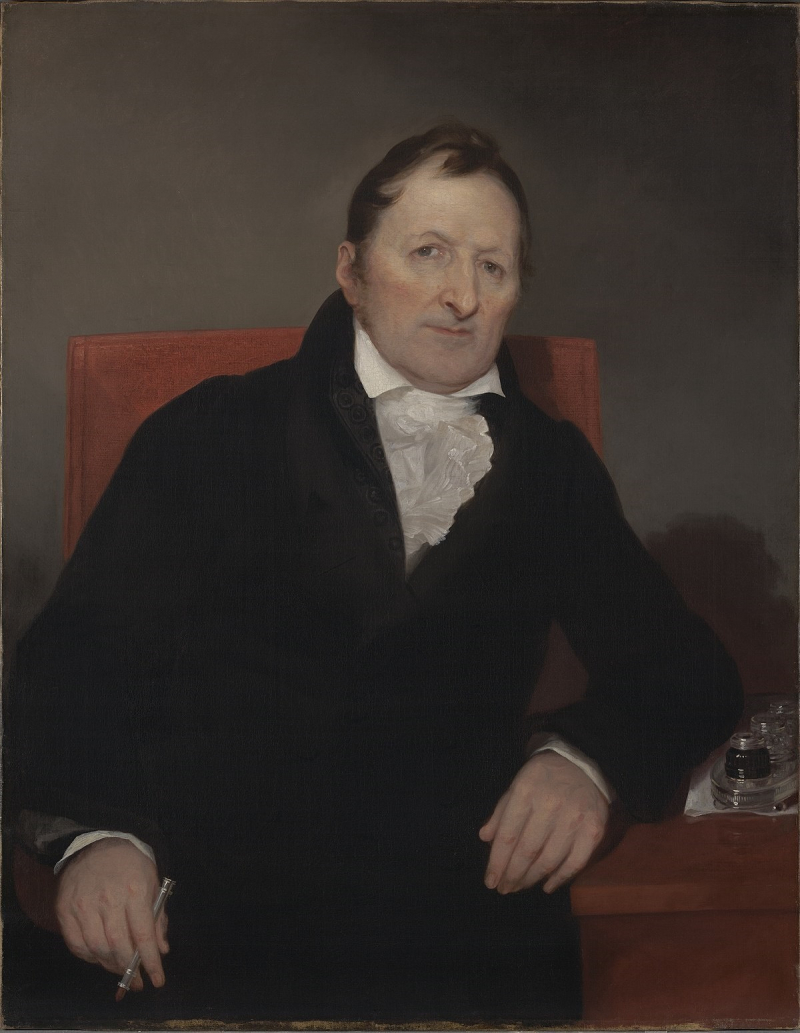
en.wikipedia.org 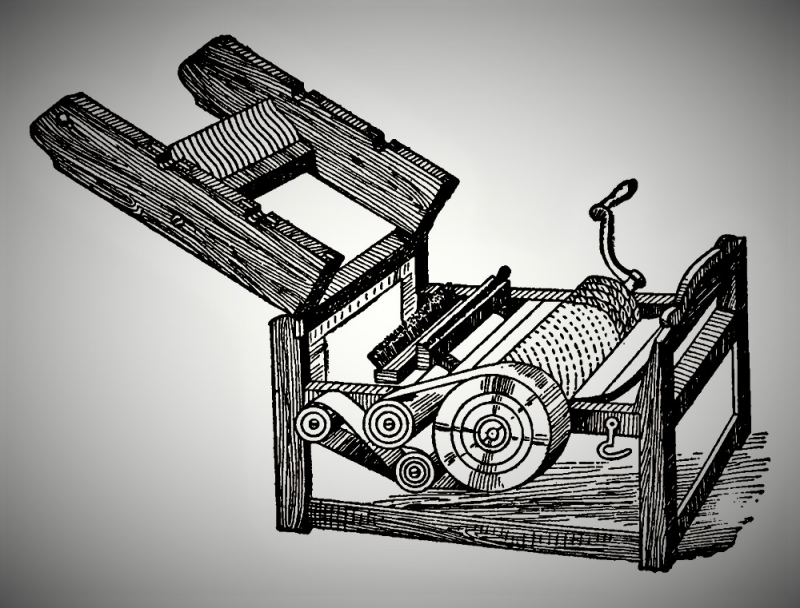
constitutingamerica.org -
Sir Henry Bessemer was an English inventor whose steelmaking process would become the most prominent steelmaking technique in the nineteenth century for nearly a century, from 1856 to 1950. He was also instrumental in building Sheffield, nicknamed "Steel City," as a major industrial powerhouse.
Henry Bessemer devised his technology for blowing air into molten pig iron to eliminate impurities in order to minimize the cost of steel production for military weapons. This made steel production easier, faster, and less expensive, and it revolutionized structural engineering. Bessemer, one of the most important inventors of the Second Industrial Revolution, also invented over 100 additional things in the domains of the iron, steel, and glass. Unlike many innovators, he was able to complete his own inventions and earn financially from their success. In 1879, he was knighted for his contributions to science, and the following year, he was elected a fellow of the Royal Society.
Bessemer's initial wealth came from a series of six steam-powered machines for producing bronze powder, which was utilized in the production of gold paint. According to his book, he inspected the bronze powder created in Nuremberg, which at the time was the only site where it was made. He then duplicated and refined the product, allowing it to be manufactured on a simple production line. It was an early example of reverse engineering, which involves analyzing a product and then reproducing it. In 1848, Bessemer invented a method for producing a continuous ribbon of plate glass, but it was never commercially viable. He got expertise in designing furnaces, which he would put to good use in his new steel-making method.
From 1850 until 1855, Henry Bessemer worked on the problem of producing cheap steel for ordnance production, and he patented his process. Bessemer originally detailed the process to a conference of the British Association in Cheltenham on August 24, 1856. The Bessemer process used oxygen in air blasted through molten pig iron to burn off impurities and generate steel. Though this process is no longer commercially employed, it was enormously important at the time of its development since it reduced the cost of producing steel, resulting in steel being widely substituted for cast iron and wrought iron. In an effort to improve gun construction, Bessemer's attention was called to the problem of steel manufacturing.
Born: 19 January 1813 (Charlton, Hertfordshire, England)
Died: 15 March 1898 (London, England)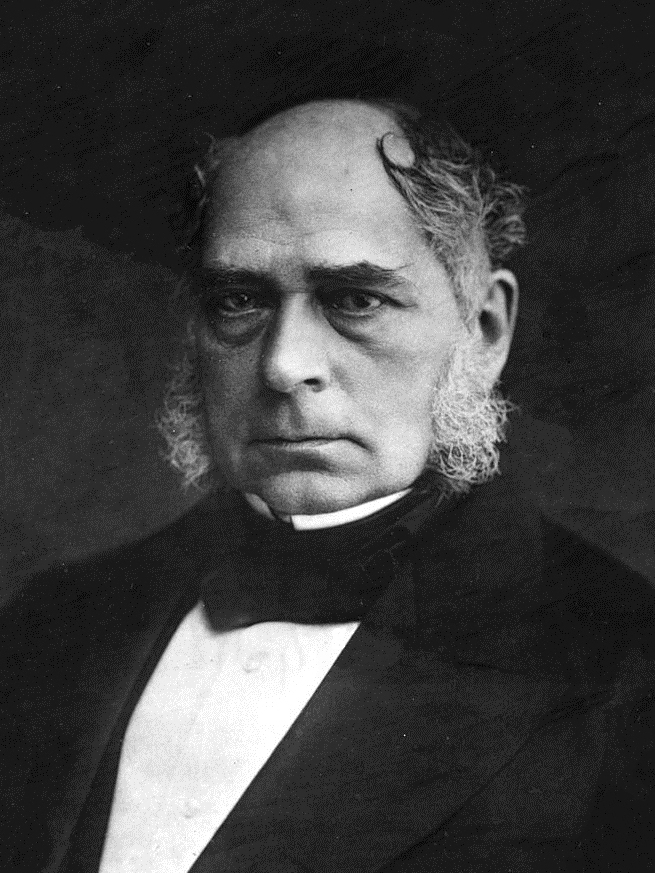
vi.wikipedia.org 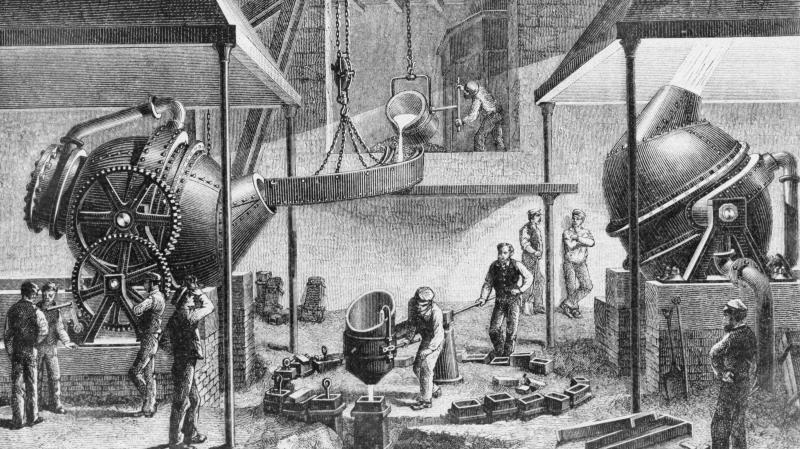
thoughtco.com -
Samuel Finley Breese Morse, as one of the major inventors of the Industrial Revolution, was a painter and inventor from the United States. Morse contributed to the design of a single-wire telegraph system based on European telegraphs in his middle age, after establishing his reputation as a portrait painter. Samuel Finley Breese Morse was a co-creator of Morse code and contributed to the commercialization of telegraphy.
Morse met Charles Thomas Jackson of Boston, a guy well-versed in electromagnetism, on his way back from Europe in 1832. Morse created the concept of a single-wire telegraph after witnessing different trials with Jackson's electromagnet. He put his painting, The Gallery of the Louvre, aside. The original Morse telegraph, filed with his patent application, is housed in the Smithsonian Institution's National Museum of American History. Morse code, which he invented, would eventually become the world's principal language of telegraphy. It is still the standard for rhythmic data transfer.
Meanwhile, in 1833, William Cooke and Professor Charles Wheatstone became aware of Wilhelm Weber and Carl Gauss' electromagnetic telegraph. Despite starting later, they had progressed to the point of launching a commercial telegraph before Morse. In 1836, four years after Morse, Cooke became captivated by electrical telegraphy in England. Cooke abandoned his core topic of anatomy and created a small electrical telegraph in three weeks, thanks to his better financial means. Wheatstone was also working with telegraphy and realized that a single huge battery would not be able to deliver a telegraphic signal over great distances. He hypothesized that a large number of small batteries would be significantly more successful and efficient in this operation. Cooke and Wheatstone formed a partnership and patented the electrical telegraph in May 1837, and within a few months had given a 13-mile (21-kilometer) stretch of the telegraph to the Great Western Railway. Cooke and Wheatstone's multiple-wire signaling system, however, would be surpassed by Morse's less expensive method within a few years.
Born: April 27, 1791 (Charlestown, Massachusetts, U.S.)
Died: April 2, 1872 (New York City, U.S.)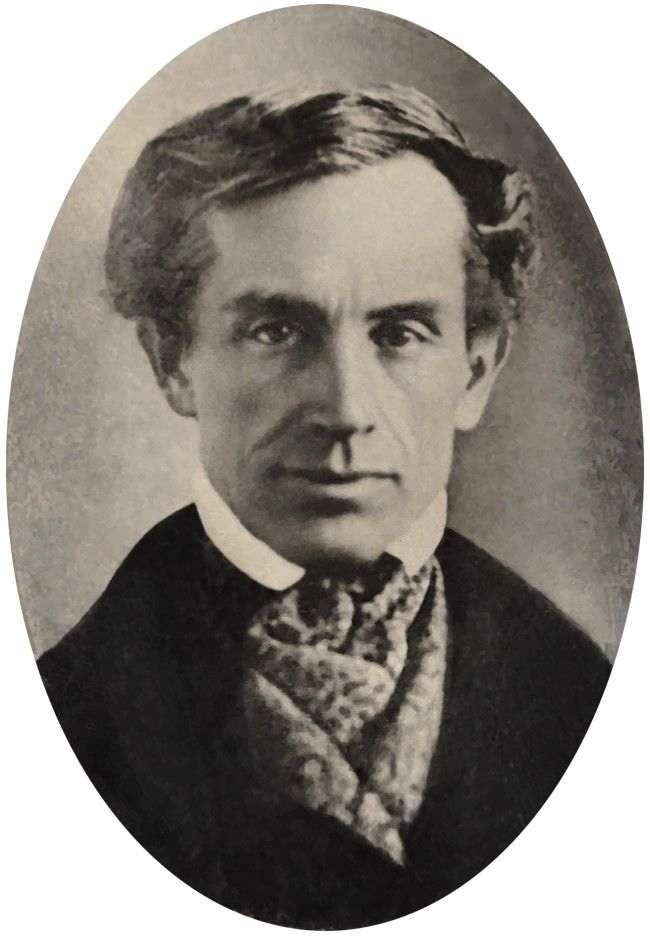
timenote.info 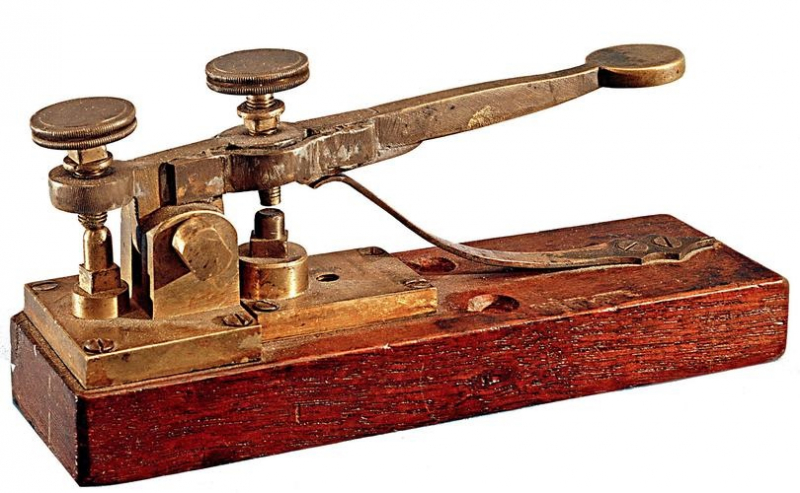
sutori.com -
Nicolaus August Otto was a German engineer who invented the compressed charge internal combustion engine, which ran on petroleum gas and gave rise to the modern internal combustion engine. The Association of German Engineers (VDI) developed the DIN standard 1940, which states "Otto Engine: internal combustion engine in which the ignition of the compressed fuel-air mixture is initiated by a timed spark", which has since been applied to all engines of this type.
Nicolaus August Otto was born in Holzhausen a der Haide, Germany, on June 10, 1832. He was the sixth of six children. In 1832, his father died. He started school in 1838. After six years of excellent performance, he was sent to the Langenschwalbach High School until 1848. He did not complete his studies but was recognized for his excellent achievement.
Otto and his brother learned of a unique gas (illuminating gas) engine created in Paris by Jean Joseph Etienne Lenoir in the late autumn of 1860. The brothers produced a replica of the Lenoir engine and sought a patent with the Prussian Ministry of Commerce in January 1861 for a liquid-fueled engine based on the Lenoir (Gas) engine, but it was denied.
Otto was aware of the notion of compressed fuel charge and attempted to build an engine based on it in 1861. It only lasted a few minutes before crashing. Otto's brother abandoned the idea, prompting Otto to seek assistance elsewhere. Otto experimented with the engine from 1862 to 1863, with the assistance of Cologne Mechanic Michael J. Zons to improve the engine. Due to a lack of cash, Otto worked for Carl Mertens in 1862 in order to continue working on his engine.
Otto began looking for investors to fund his studies in 1864. Eugen Langen, whose father was a sugar industrialist, was found. On March 31, 1864, they formed a firm in Cologne and titled it NA Otto & Cie. This was the world's first company solely dedicated to the design and manufacture of internal combustion engines.
The Otto & Langen engine from 1864 was a free-piston atmospheric engine (the explosion of gas was used to create a vacuum and the power came from atmospheric pressure returning to the piston). It used half the amount of gas as the Lenoir and Hugon atmospheric engines and was a commercial success. The Lenoir engine was a two-stage engine. In essence, these engines are steam engines that have been modified to work on illuminating gas. The engines invented by Italians Eugenio Barsanti and Felice Matteucci in their British Patent no 1625 of 1857 were built and are now on display in a museum. Unlike Otto's engine, these are two-stroke atmospheric engines that are not comparable in any way.
Born: 10 June 1832 (Holzhausen an der Haide)
Died: 26 January 1891 (Cologne)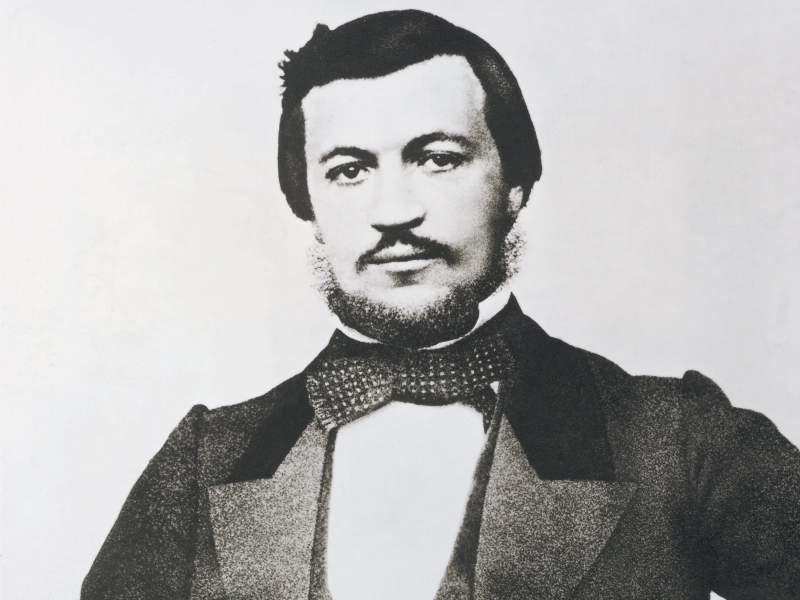
vi.wikipedia.org 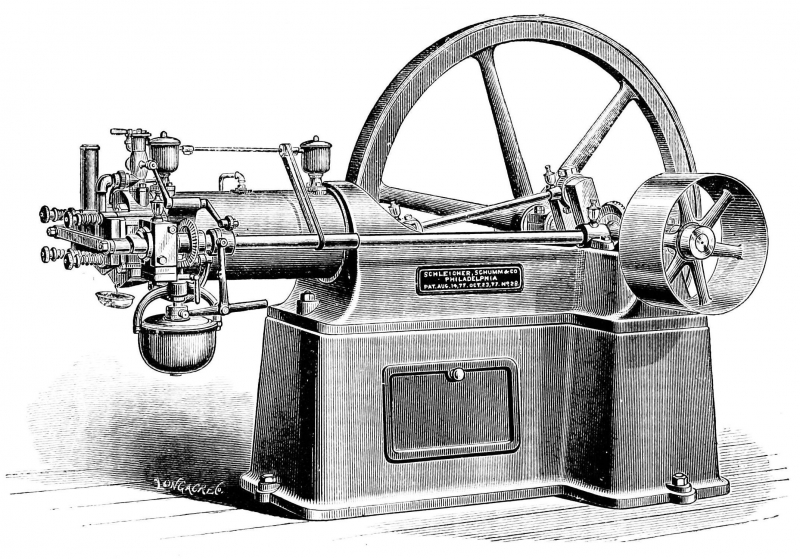
wikiwand.com -
Thomas Edison was a businessman and inventor from the United States. He invented numerous inventions in disciplines as diverse as electric power generation, mass communication, sound recording, and motion pictures. These technologies, which included the phonograph, motion picture cameras, and early versions of the electric light bulb, had a significant impact on the modern industrialized world. Working with numerous researchers and staff, he was one of the first inventors to apply the ideas of organized science and cooperation to the process of invention. He was the first to establish an industrial research laboratory.
Edison was bred in the American Midwest and worked as a telegraph operator early in his career, which inspired some of his earlier inventions. In 1876, he opened his first laboratory in Menlo Park, New Jersey, where he created several of his early innovations. Later, he co-founded a botanical laboratory in Fort Myers, Florida, with businessmen Henry Ford and Harvey S. Firestone, as well as a laboratory in West Orange, New Jersey, which housed the world's first film studio, the Black Maria. Edison is regarded as the most prolific inventor in American history, holding 1,093 US patents as well as patents in other nations. Edison was married twice and has six children. He died of diabetic complications in 1931.
Thomas Edison was born in Milan, Ohio, in 1847, but grew up in Port Huron, Michigan, after his family relocated there in 1854. Edison's mother, a former schoolteacher, taught him reading, writing, and arithmetic. He just went to school for a few months. However, according to one biographer, he was a very curious boy who learned most things by reading on his own. He was captivated by technology as a child and spent hours at home conducting experiments.
Edison began his career as an inventor in Newark, New Jersey, with the automatic repeater and other improved telegraphic equipment, but it was the phonograph 1877 that made him famous. This achievement was so unexpected by the general public that it appeared nearly magical.
He began by attempting to create a long-lasting incandescent bulb, which would be required for indoor use. On October 21, 1879, Edison invented a commercially the viable electric light bulb and created an electric "utility" to compete with the existing gas light utilities. He formed the Edison Illuminating Company on December 17, 1880, and developed an energy distribution system during the 1880s. In 1882, the business launched the first investor-owned electric service at New York's Pearl Street Station. On September 4, 1882, Edison turned on the electrical power distribution system at his Pearl Street generating station, which provided 110 volts of direct current (DC) to 59 clients in lower Manhattan.
In 1876, Edison began working on improving the microphone for telephones by designing a carbon microphone, which consists of two metal plates separated by carbon granules that alter resistance with the pressure of sound waves. A constant direct current is carried between the plates via the granules, and the fluctuating resistance results in current modulation, resulting in a varying electric current that reproduces the varying pressure of the sound wave.
Thomas Edison began working on an electrical lighting system in 1878, hoping to compete with gas and oil-based lighting. He began by attempting to create a long-lasting incandescent bulb, which would be required for indoor use. On October 21, 1879, Edison invented a commercially the viable electric light bulb and created an electric "utility" to compete with the existing gas light utilities. He formed the Edison Illuminating Company on December 17, 1880, and developed an energy distribution system during the 1880s. In 1882, the business launched the first investor-owned electric service at New York's Pearl Street Station. On September 4, 1882, Edison turned on the electrical power distribution system at his Pearl Street generating station, which provided 110 volts of direct current (DC) to 59 clients in lower Manhattan.
Born: February 11, 1847( Milan, Ohio, U.S.)
Died: October 18, 1931(West Orange, New Jersey, U.S.)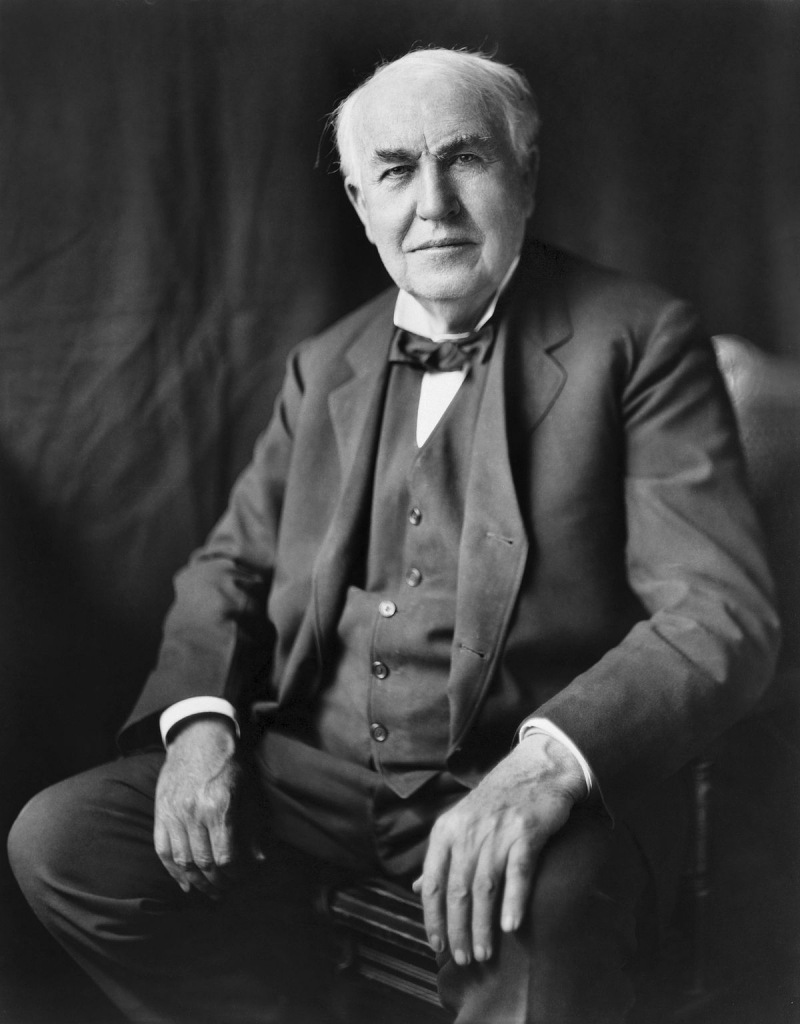
en.wikipedia.org 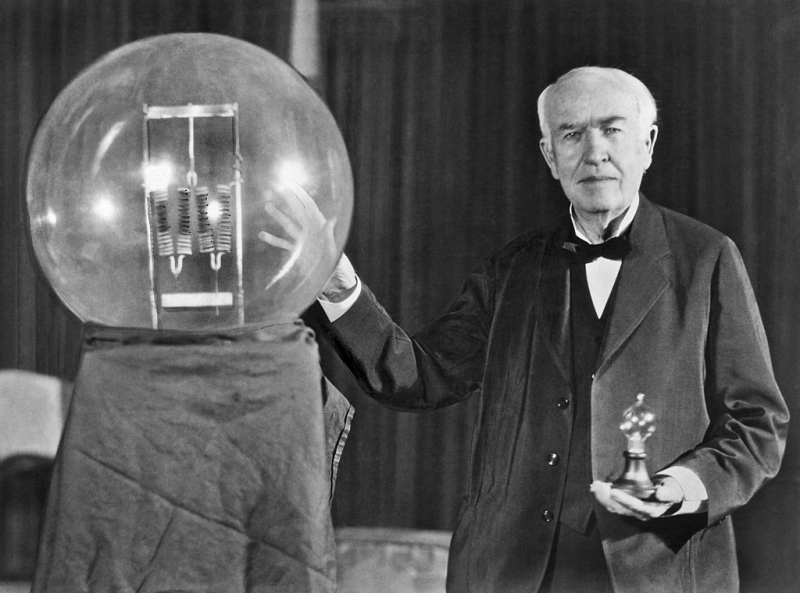
thoughtco.com -
Nikola Tesla was a Serbian-American inventor, electrical engineer, mechanical engineer, and futurist who was vital to the development of the modern alternating current (AC) electricity delivery system.
Nikola Tesla, who was born and raised in the Austrian Empire, studied engineering and physics without getting a degree in the 1870s, gaining practical experience in the early 1880s working in telephony and at Continental Edison in the emerging electric power business. He immigrated to the United States in 1884 and became a naturalized citizen. He briefly worked at the Edison Machine Works in New York City before striking out on his own. Tesla established laboratories and enterprises in New York to create a variety of electrical and mechanical devices with the assistance of partners to finance and commercialize his ideas. His alternating current (AC) induction motor and associated polyphase AC inventions were licensed by Westinghouse Electric in 1888 and were the foundation of the polyphase system that the firm subsequently commercialized.
Tesla experimented with mechanical oscillators/generators, electrical discharge tubes, and early X-ray imaging in an attempt to develop technologies that he could patent and market. He also developed one of the first wireless-controlled boats ever displayed. Tesla rose to prominence as an inventor, demonstrating his accomplishments to celebrities and wealthy patrons in his lab, and was recognized for his theatrics during public talks. In his high-voltage, high-frequency power tests in New York and Colorado Springs throughout the 1890s, Tesla pursued his ideas for wireless lighting and worldwide wireless electric power distribution. He made statements on the possibility of wireless communication with his devices in 1893. Tesla attempted to apply these concepts in his unfinished Wardenclyffe Tower project, an intercontinental wireless communication and power transmitter but ran out of funds before completing it.
Following Wardenclyffe, Tesla experimented with a number of innovations with varying degrees of success in the 1910s and 1920s. In January 1943, he died in New York City. Following his death, Tesla's invention faded into obscurity until 1960, when the General Conference on Weights and Measures designated the SI unit of magnetic flux density the tesla in his honor. Since the 1990s, there has been a spike in public interest in Tesla.
Born: 10 July 1856 (Smiljan, Austrian Empire)
Died: 7 January 1943 (New York City, U.S.)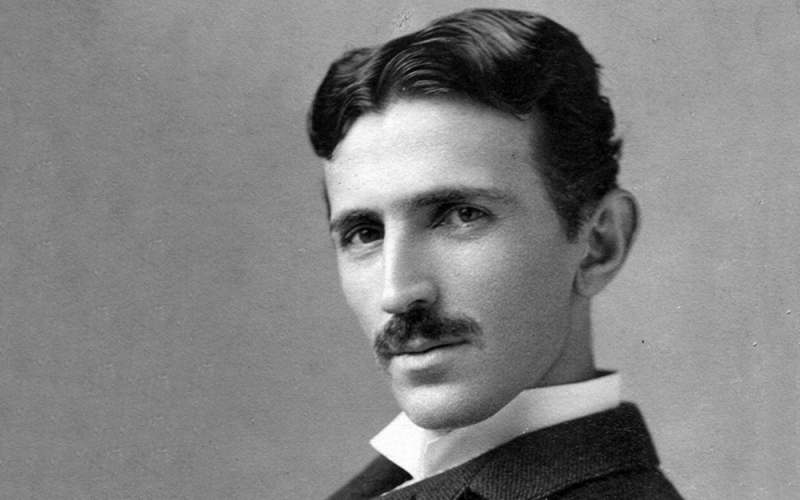
vnexpress.net 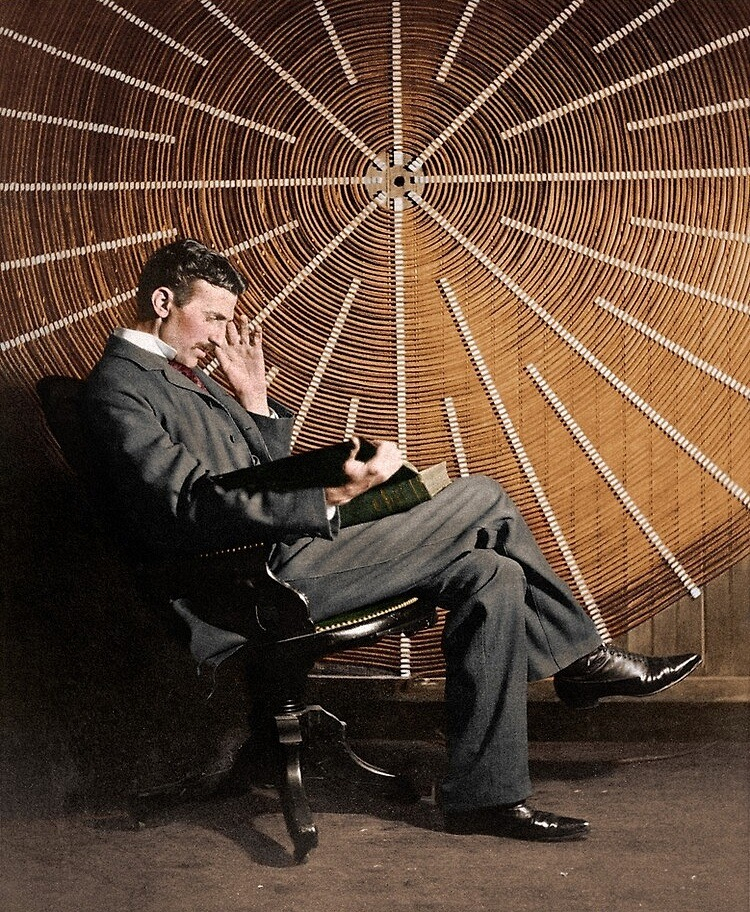
drnikolatesla.tumblr.com -
The Wright brothers, Orville and Wilbur Wright were American aviation pioneers widely credited with inventing, building, and flying the world's the first successful motor-powered airplane. On December 17, 1903, they made the first controlled, sustained flight of a powered, heavier-than-air aircraft with the Wright Flyer, 4 miles (6 kilometers) south of Kitty Hawk, North Carolina, at what is now known as Kill Devil Hills. The brothers were also the first to develop aircraft controls, which enabled fixed-wing powered flight.
With the Wright Flyer II, the Wright brothers developed their flying machine to make longer-running and more aerodynamic flights in 1904-1905, followed by the Wright Flyer III, the first truly practical fixed-wing aircraft. The brothers' breakthrough was the development of a three-axis control system, which allowed the pilot to effectively steer the aircraft while maintaining its equilibrium. This method is still used on all fixed-wing aircraft. Wilbur and Orville focused their early aeronautical efforts on developing a dependable method of pilot control as the key to solving "the flying problem." This approach was markedly different from that of other experimenters at the time, who were more concerned with developing powerful engines. The Wrights also collected more accurate data than anyone before using a small home-built wind tunnel, allowing them to design more efficient wings and propellers. Their first US patent did not claim the invention of the flying machine, but rather a system of aerodynamic control that manipulated the surfaces of the flying machine.
Working for years in their Dayton, Ohio-based shop with printing presses, bicycles, motors, and other machinery, the brothers honed the mechanical skills necessary for their success. From 1900 until their first powered flight in late 1903, the brothers conducted extensive glider tests that honed their piloting abilities. Charles Taylor, their shop mechanic, became an important member of the team, working closely with the brothers to build their first airplane engine.
Various parties have challenged the Wright brothers' status as the inventors of the airplane. There is still much debate about the many competing claims of early aviators. According to Edward Roach, historian for the Dayton Aviation Heritage National Historical Park, they were excellent self-taught engineers capable of running a small business, but they lacked the business skills and temperament to dominate the growing aviation industry.
Orville Wright
Born: August 19, 1871 (Dayton, Ohio)
Died: January 30, 1948 (Dayton, Ohio)Wilbur Wright
Born: April 16, 1867 (Millville, Indiana)
Died: May 30, 1912 (Dayton, Ohio)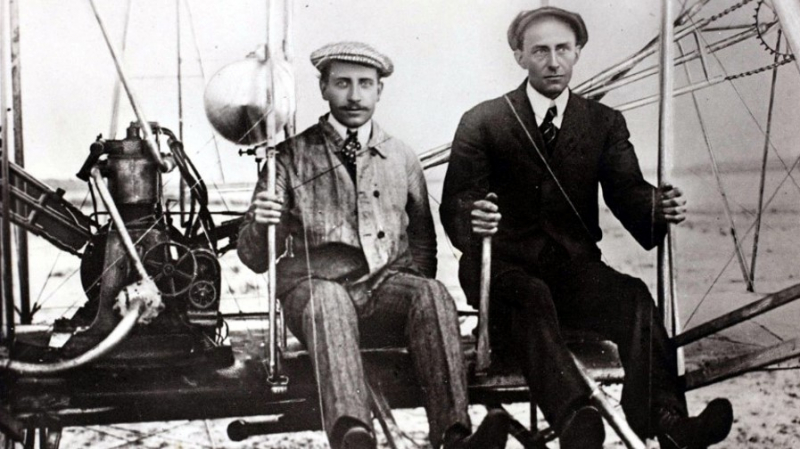
greenlightrights.com 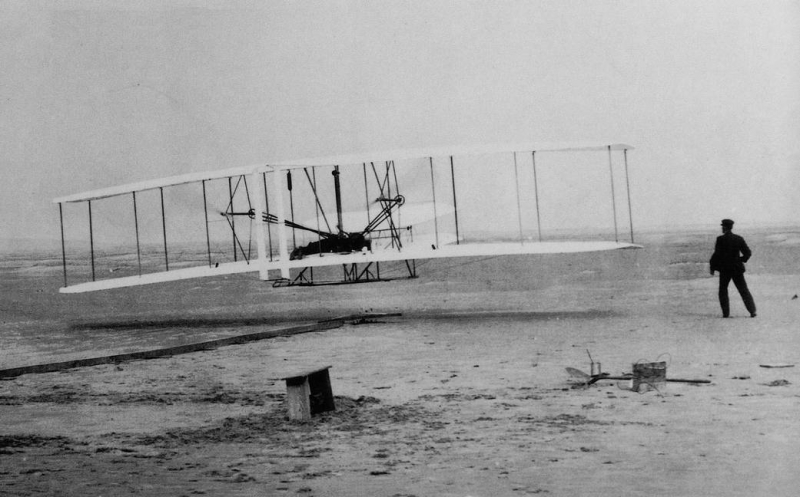
spacecenter.org












